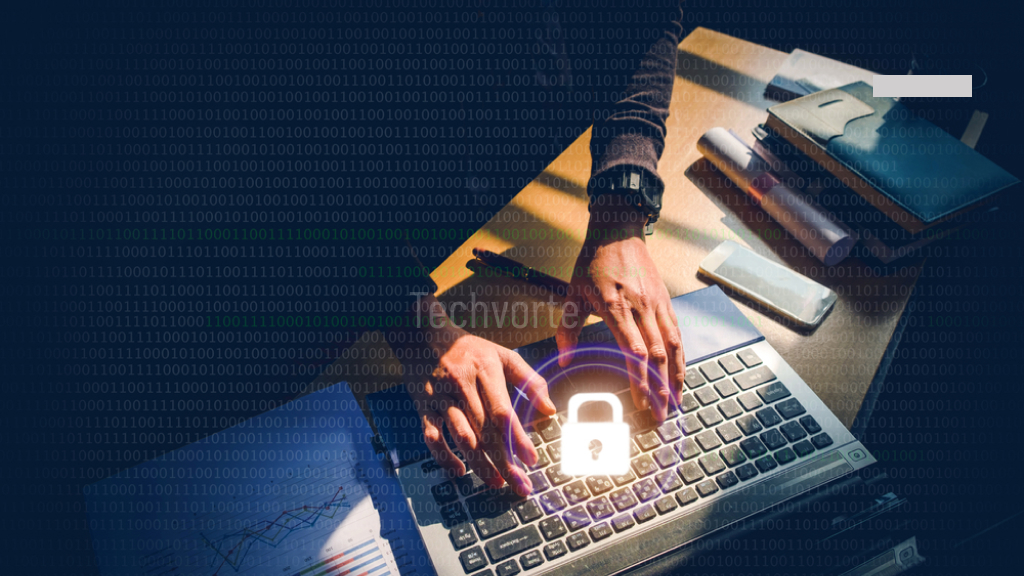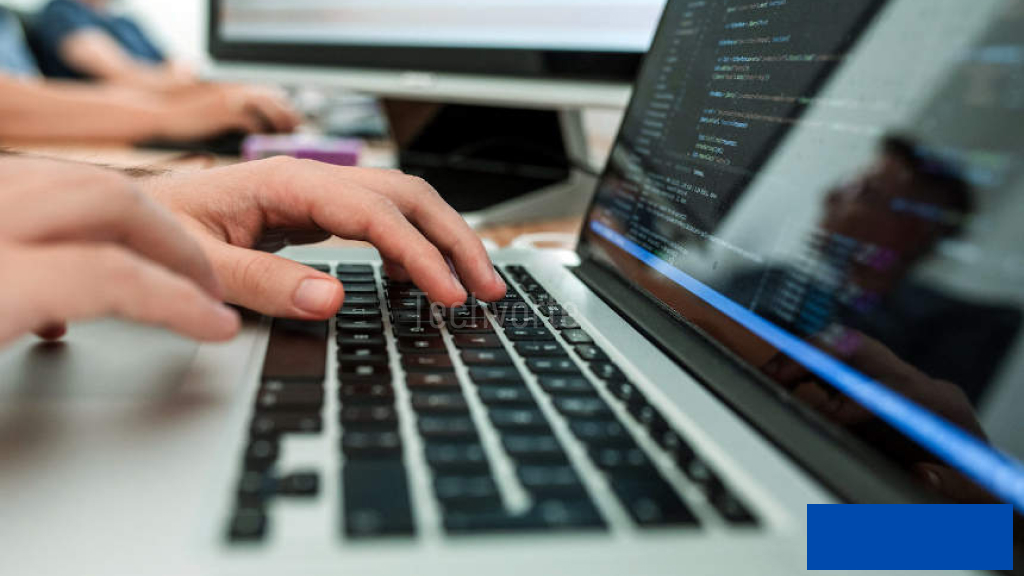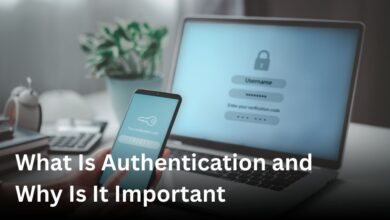Do you know, the digital world is full of risks?
Keeping your organization’s data and systems safe is a must.
A cyber security audit checks deeply and protects against many online threats. It finds and fixes weaknesses in your IT setup.
Understanding the importance of cyber security audit helps you keep your digital info safe.
It also makes following laws like GDPR, HIPAA or PCI-DSS easier.
This puts your organization ahead in security and obeying rules.
Unveiling the Importance of Cyber Security Audit
The digital world is always changing, and so are the threats.
This makes the importance of cyber security audit very clear.
Cyber attackers keep getting smarter.
Organizations must stay ready to prevent data breaches and protect their reputation.
A thorough cyber security audit helps find weaknesses and fix them quickly.
A cyber security audit brings many benefits. It helps find and stop vulnerabilities.
Having regular audits lets organizations know where they stand security-wise.
This will helps them prevent hacking attempts and unauthorized access.
These audits also build trust with customers and partners by showing a commitment to protecting their data.
- Preventive measures identified through audits help to avert security incidents before they manifest.
- Audit findings serve as a catalyst for enhancing security protocols and technologies.
- Stakeholder confidence is reinforced when a rigorous cyber security audit demonstrates an organization’s commitment to data protection.
Do you know, the gains from cyber security audit benefits are huge.
They are key for an organization’s security strategy. They also help stay strong against new cyber threats.
Key Components of a Cyber Security Audit Framework
Starting a cyber security audit needs a good plan to fight cyber threats well.
We’ll look at the main parts of an effective cyber security audit framework.
This is key to keep an organization’s online world safe.
Defining the Scope of the Audit
To start any cyber security audit framework, you must decide what to check.
It’s crucial to clearly define the scope. You should list the systems, applications and processes to examine.
This might include checking network security or software applications for weaknesses.
Having a clear scope ensures the audit checklist fits the business’s specific needs.
It makes the audit process focused and efficient.
Selecting Standards and Best Practices
Choosing the right standards is important for a strong cyber security audit framework.
Following top standards like ISO 27001, the NIST Cybersecurity Framework or the CIS Controls helps.
These standards guide how to review and boost security efforts.
They help make the organization stronger against cyber threats.
Establishing Evaluation Criteria
The last step in setting up a cyber security audit framework is creating evaluation criteria.
This means making clear rules for the audit checklist to rate the cyber defenses.
You might look at how strong access controls are, how good incident response plans are and how aware the employees are of security.
These criteria help measure and improve the organization’s cyber security tactics.
Implementing Best Cyber Security Audit Practices

To keep your data safe, it’s critical to use top-notch cyber security audit practices.
These practices ensure your organization’s data is secure and your stakeholders trust you.
With a detailed security audit, you can identify risks and get advice on improving your defenses.
Involving Qualified Auditors
Selecting skilled and qualified auditors is key for a sound cyber security audit.
Cyber security is complex, requiring auditors with a deep focus on this field.
Their insights help reveal hidden weaknesses and offer solutions based on a thorough understanding of security threats.
Regular Scheduling and Consistent Execution
Dealing with evolving digital threats means regularly conducting security audits.
Setting a schedule for these audits keeps your organization alert.
This way, you can spot potential security issues early and adapt quickly, staying safe against emerging threats.
Comprehensive Reporting and Actionable Insights
Essential to great cyber security audits is thorough reporting.
Detailed reports with clear insights help leaders grasp their cyber risk levels.
This guides organizations to strengthen their cyber defenses with well-informed, strategic actions.
Benefits of a Regular Cyber Security Audit
Running regular cyber security audits has a lot of benefits for any organization. They help increase security standards.
This protects the digital environment from online threats.
Let’s talk about the good points of doing these important checks often.
- Improved Security Posture: A big plus of cyber security audits is making a company’s online defense stronger. These checks help find and fix hidden weaknesses, making security better.
- Compliance Adherence: Cyber security audits help make sure a company follows complex industry rules. Following these rules isn’t just about following the law.
- Enhanced Customer Trust: Showing that you protect customer data through regular audits builds trust. This shows customers that the brand is safe and reliable.
- Cost Savings: Finding and dealing with security issues early can save a lot of money. Cyber incidents cost a lot, not just in immediate fixes but also in long-term effects.
In summary, the perks of cyber security audits go beyond just avoiding risks.
They help organizations move towards a safer and more stable digital future.
Understanding the Cyber Security Audit Process
The journey to strengthen an organization’s cyber defenses starts with a cyber security audit.
By following a proven audit process, organizations can pinpoint and address their cyber weaknesses systematically.
Planning and Preparation
The first step is setting the stage for a successful audit.
It’s about defining clear goals, building a skilled audit team and planning carefully.
These steps determine the audit’s direction and its breadth.
- Defining audit goals to match the organization’s security needs.
- Choosing a team with the right technical skills.
- Timing the audit to avoid causing work disruptions.
Assessment and Analysis
In the audit methodology, the assessment phase is key.
Auditors closely examine the organization’s IT systems during this stage.
It connects the planning to real security gaps.
- Checking the current security policies and controls.
- Finding security weaknesses by thorough scans of systems and networks.
- Studying how these weaknesses could threaten the organization’s cyber safety.
Remediation and Improvement Strategies
The last part of the audit focuses on turning insights into actions.
The goal is to craft a plan that makes the organization safer from cyber threats.
- Making detailed recommendations to tackle the risks found.
- Improving security measures and training staff to cover gaps.
- Planning more audits to keep improving over time.
Tools and Method for an Effective Cyber Security Audit
Finding the right mix of tools and methods is key for a good cyber security audit.
This mix is what makes an audit deep and strong. It shows how safe an organization is.
An audit needs both automated tools and manual checks by experts.
This mix helps get a complete view of an organization’s cyber safety.
- Vulnerability Scanners: Critical for identifying known security vulnerabilities within network systems and applications. These tools systematically scan for weaknesses that attackers could exploit.
- Penetration Testing Tools: Simulate cyber attacks under controlled conditions to assess the effectiveness of existing security measures.
- Log Analysis Software: Analyzes logs to detect anomalies or patterns indicative of unauthorized or malicious activity.
- Security Information and Event Management (SIEM) Solutions: Provide real-time analysis of security alerts generated by applications and network hardware.
Using strong cyber security audit methods is a must. They help understand the impact of any weaknesses found.
These methods help auditors make sense of data and suggest steps to take.
- Threat Modeling: Identifies potential threats and prioritizes them based on their perceived risk, guiding auditors on where to focus their efforts.
- Risk Assessments: Evaluate the likelihood and impact of threats, helping organizations to allocate resources effectively in order to minimize risk.
- Control Frameworks: Such as ISO 27001, NIST, or COBIT, provide a structured approach for assessing and improving an organization’s security controls and practices.
Combining tools and methods lets auditors give a thorough report.
This report tackles the complex nature of cyber security. It also offers the best ways to improve and protect.
Conclusion
The digital world is always changing, with new threats appearing as fast as technology evolves.
A deep and thoughtful cyber security audit is incredibly important. It catches small security issues before they turn into big problems, keeping an organization safe from online attacks.
This shows why cyber security audits are key in protecting valuable assets.
They also make sure security steps keep up with the fast-paced changes in cyber threats.
Good cyber security is more than just technical fixes it builds trust.
The value of a cyber security audit shines in the trust and confidence it brings to a company.
Every audit shows customers and partners that the company is serious about keeping their information safe.
This dedication to top security measures also lines up with global standards.
Through thorough checks and updates, companies create a strong shield around their core data and systems.
In conclusion, skipping out on security audits can lead to big problems, like loss of trust and financial issues.
On the other hand, a thorough cyber security audit keeps a company alert and compliant.
It promotes a culture of always getting better.
So, the importance of cyber security audits can’t be overstated. They are crucial for a company’s online safety and success.
FAQ
What is a cyber security audit?
A cyber security audit checks an organization’s security steps. It looks for weak spots and risks. This review includes looking at IT setup, systems, and rules to keep digital info safe and sound.
Why is a cyber security audit important?
It’s key because it finds security issues before they cause trouble. It helps follow rules and builds trust. This shows a serious promise to protect important info.
What are the key components of a cyber security audit framework?
Key parts include setting the audit’s range, picking standards, and making evaluation criteria. Setting the range figures out what to check. Using standards follows known guidelines. And criteria help judge security efforts well.
What are the best practices for implementing a cyber security audit?
Best practices involve using skilled auditors and doing audits regularly. They also include detailed reports with clear steps to take. This makes sure audits are thorough and weaknesses are fixed.
What are the benefits of a regular cyber security audit?
Regular audits improve security, ensure rules are followed, and save money. They also boost customer trust. Fixing weak spots quickly helps fight off cyber threats.
What is the cyber security audit process?
The process starts with planning and getting ready. Then comes assessment and analysis. Lastly, it ends with fixing issues. Planning sets goals, assessment checks security, and fixing takes care of problems found.
What tools and methodologies are used in a cyber security audit?
Tools include scanners for vulnerabilities and testing, plus software for log analysis and SIEM solutions. Methods involve risk assessment and using control frameworks. These help evaluate security measures effectively.
Why should organizations regularly conduct a cyber security audit?
Doing audits often keeps security strong and spots weaknesses early. It’s good for following rules and building stakeholder trust. It means a group can always be improving their security steps.





